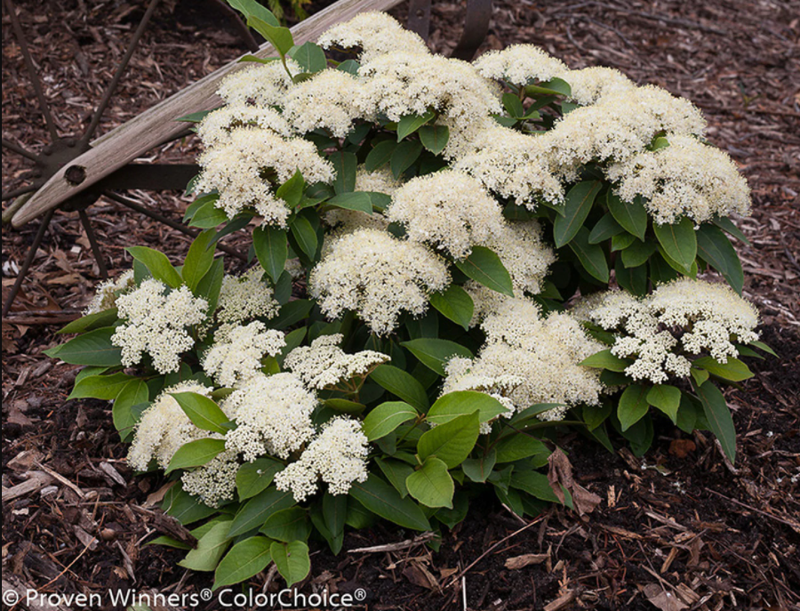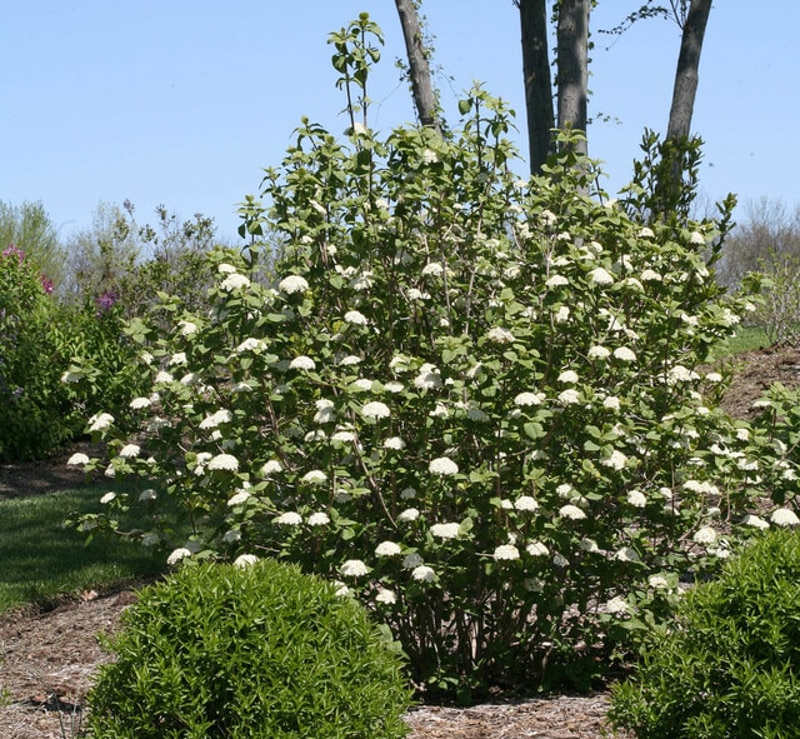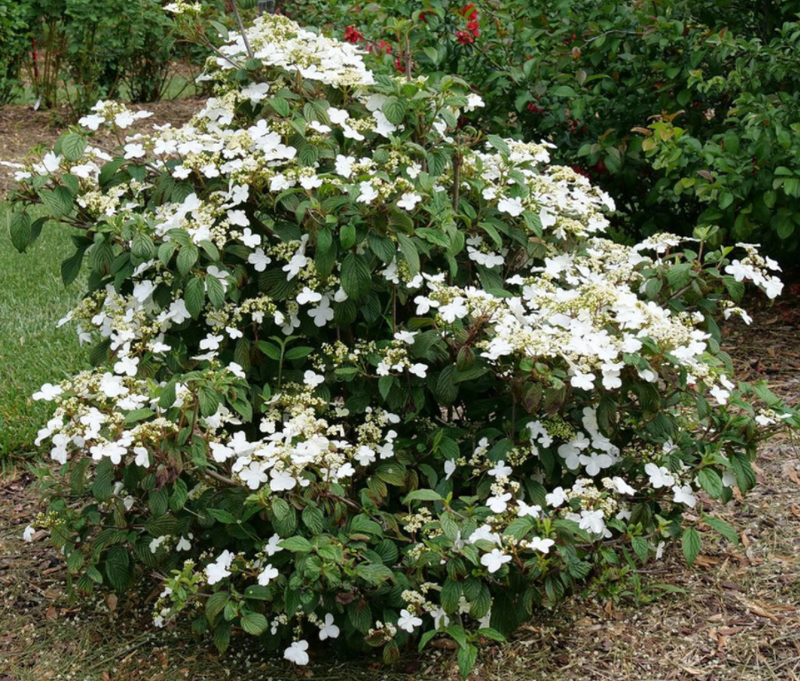Viburnums are a group of flowering shrubs and consist of more than 150 species of plants. Native to North America and Asia, viburnums include deciduous and evergreen shrubs. Viburnum offers year-round enjoyment, is low maintenance with spring to summer blooms, offers attractive foliage, and fall colors to winter fruit for wildlife.
Depending on the variety, viburnum grows in zones 2-11 and comes in a wide range of sizes. Viburnums are part of the Caprifoliaceae family and are related to other shrubs such as the honeysuckles, the abelias, and the weigelas. Viburnums are not picky about their growing conditions, but prefer fertile, well drained soil.

What You Need To Plant Viburnum
- Shovel
- Moist well drained soil area
- Garden spade
- Hose for watering
Where to Plant Viburnum
Generally, viburnums like full sun to partial shade. For better blooms, berries, and fall colors, plant it in an area that gets full sun. Viburnums like organically rich soil with a pH 5.6 to 6.6. Preferring consistent moisture, be sure it is planted in soil that is well draining. Viburnum can be planted in the spring or fall. Its roots can grow 18 inches deep. When planting, dig a hole as deep as the root ball and at least two to three times wider. With 150 different species of viburnum, check the label for individual requirements.
Viburnum Spacing
Viburnum is a fast growing plant. It can grow anywhere from one foot to two feet per year. Growing to a wide range of heights from just under 3 feet and some species reaching 20 feet tall, spacing is important to consider.
Most viburnums grow as shrubs and are known to spread. Depending on the mature size of the plant, space viburnum anywhere from 5 to 15 feet apart. (follow the advice on the label of the plant)
Do not space any closer than 4 feet next to each other or the plants will fight for sunlight and not thrive. If you are planting them near a structure, dig the hole 4 feet or more away from the structure. If planting near a driveway, or sidewalk, come in 4-5 feet.

Steps To Plant Viburnum
You are most likely planting a viburnum purchased in a container. Prior to planting the viburnum, thoroughly water it. During the first year, the new plant should be watered regularly (at least once a week) to help establish a good root system.
To transplant a container-grown viburnum bush, dig the planting hole just as deep as the root ball and 2 to 3 times as wide. Loosen any impacted roots gently with your fingers. Place the shrub into the hole so that the top of the root ball is even with the surrounding ground level.
Backfill the hole halfway and water it in to settle the bottom layer of soil. Backfill the rest of the way, and make a soil ring to hold water. Water again to settle in the rest of the way. Space according to its mature size.
Step 1 - Prepare the garden area by removing debris and weeds.
Step 2 - Dig a hole 2-3 times wider than the root ball.
Step 3 - Loosen the roots with your fingers
Step 4 - Place the shrub in the hole so the top of the root ball is even with the soil surface.
Step 5 - Put soil in the hole about half way and water to stabilize.
Step 6 - Finish filling the hole with soil.
Step 7 - Water well allowing the water to soak into the ground.
Step 8 - Water weekly for the first year of growth.
When to Plant Viburnum
Viburnums are a low maintenance flowering shrub. Spring and fall are the optimal times to think about planting it. But you can also plant in summer, just be sure to provide additional water during dry periods and extra hot days.

Transplanting Viburnum
Digging up and transplanting viburnum can be easily done. Viburnums have a fibrous root system which helps with transplant success. Early spring, after the ground thaws, is the best time to move the plant. Transplanting can also be done in the fall after the leaves have dropped, but in colder climates, the move may not be successful.
Viburnums will not propagate from seed or from dividing. But you can propagate from softwood cuttings. It is best to do this in the spring, when new plant cells are awaking and ready to grow.
 |
Author Chris Link - Published 02-10-2021 |
